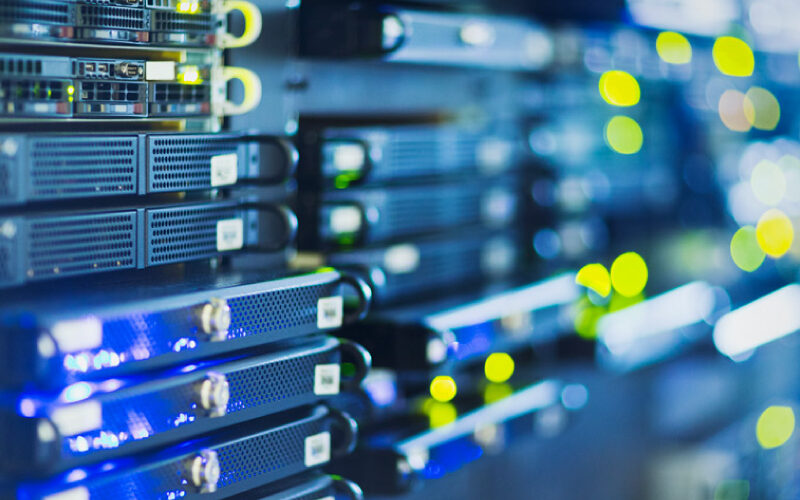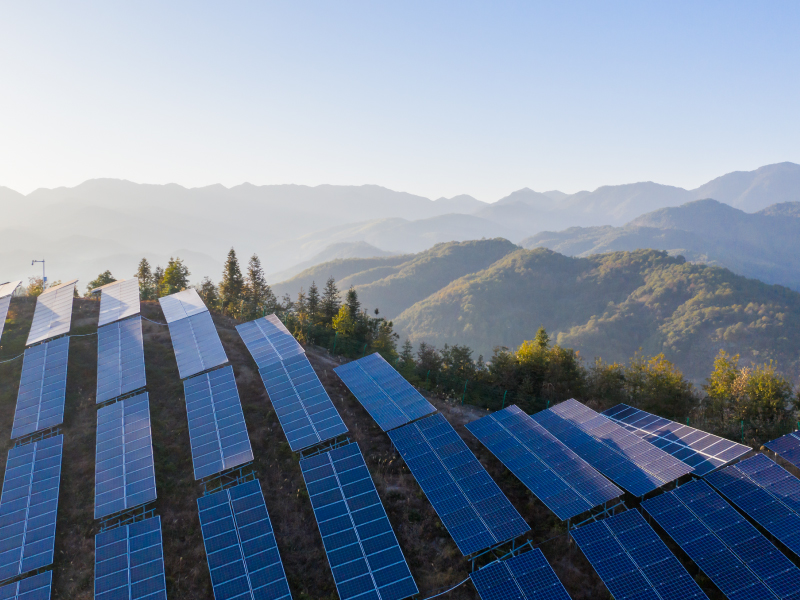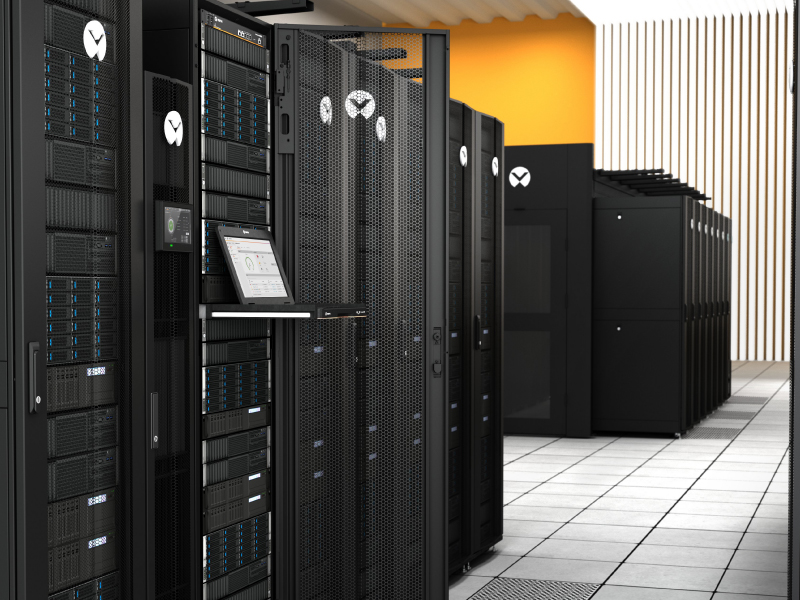
(Source – Vertiv)
Sustainability in energy and efficiency looms data center in 2023
The data center industry is expected to shift its focus a lot more towards reducing its carbon footprint and being more sustainable to the environment. With organizations increasing their pledges to focus more on sustainable solutions, reducing carbon emissions could actually benefit the data center industry a lot more.
In fact, data centers support many of the digital innovations being used to fight climate change, but now, data centers also may require their own innovation-driven transformation. Some data center operators are adopting goals based on the vision of a “net zero” data center such as adopting a multi-tiered sustainability strategy.
Experts at Vertiv recently stated that data centers will experience increased regulation and third-party oversight in 2023 as the world continues to grapple with the industry’s rising energy and water consumption against the backdrop of ongoing climate change. In some countries, regulations are already being implemented in the form of tax rebates which benefit businesses that increase their sustainability efforts.
“The data center industry is growing rapidly as more and more applications require to compute and storage, driving a corresponding rapid increase in energy and water use in data center facilities. The industry has understood that pursuing energy and water efficiency aggressively is key for future success and survival,” said Giordano Albertazzi, Vertiv’s Chief Operating Officer and President, of Americas.
Albertazzi also pointed out that increased regulation is inevitable and will lead to important innovations across our industry. The process may not always be easy or linear, but it can be navigated with the help of expert data center partners and innovative solutions that can anticipate the changes while meeting the always-increasing requirements of the data center applications.
In a recent report, Silicon heatwave: the looming change in data center climates, the Uptime Institute cited data from the Standard Performance Evaluation Corporation (SPEC) that showed server power consumption increasing by 266% since 2017. This surge is among various technical and market forces driving the focus on environmental awareness and sustainability in several of the 2023 trends identified by Vertiv’s experts.

(Source – Vertiv)
Achieving sustainability for the data center
Those trends include data centers facing increasing regulations. As pressure mounts to meet consumer demand for energy and water, governments at all levels are taking a harder look at data centers and their outsized consumption of those resources. For example, in Southeast Asia, Singapore is taking steps to control data center energy use and massive data center water consumption.
Apart from regulations, hyperscalers are shopping off the rack. A recent Omdia survey showed 99% of enterprise data center operators saying prefabricated, modular data center designs will be a part of their future data center strategy. In 2023, Vertiv’s experts anticipate a continuing shift in the same direction among hyperscalers as they seek the speed and efficiencies standardization delivers.
Next, diesel generators are about to meet their end. The diesel generator represents stored energy that largely goes unused while still requiring maintenance or fuel replacement after periods of inactivity. Then, when pressed into service, generators produce carbon emissions operators are desperately trying to avoid. Already, some organizations are relying on batteries for longer load support – up to five minutes in some cases – and even designing their data centers with minimal generator capacity.
Apart from diesel generators, higher densities are altering thermal strategies. According to the Uptime Institute’s 2022 Global Data Center Survey, more than a third of data center operators say their rack densities have rapidly increased in the past three years. This is especially true among larger enterprise and hyperscale data centers, where nearly half of those operating facilities at 10MW and above reported racks above 20kW and 20% claimed racks higher than 40kW.
This is consistent with the maturity of liquid-cooled server technologies and the increasing acceptance and adoption of such technologies. The aforementioned increases in server power consumption are happening as the need to add capacity quickly is growing, challenging operators from all sides. This leaves them little choice but to explore the boundaries of existing facilities by adding computing in tight spaces, increasing rack densities, and creating thermal profiles that require liquid cooling.
While liquid cooling is not a new technology, the early wave of successful, efficient, problem-free deployments in high-density environments has provided proof of concept that will boost adoption in the coming year. The addition of direct-to-chip cooling to new OCP and Open19 standards will only accelerate this trend.
Vertiv is also predicting that in 2023 the metaverse implementations leveraging 5G networks will enable the ultra-low latency to feature the application demands. Ultimately, this will require higher-powered computing in those 5G edge locations. As the edge of the network becomes more sophisticated, so will the infrastructure needed to support it. This will include technologies such as artificial intelligence and virtual reality planning and management systems and increased adoption of lithium-ion UPS systems at the edge.

(Source – Vertiv)
Southeast Asia’s moment to shine
With sustainability demands increasing, the data center industry in Southeast Asia is developing to meet these demands specifically. The region has already seen investments in data centers increasing tremendously post-pandemic and is expected to continue for the next few years. Singapore has already established itself as a leading example when it comes to sustainable data centers. Now, companies are building and developing sustainable data centers in neighboring Malaysia and Indonesia as well.
Teoh Wooi Keat, Country Manager for Vertiv in Malaysia explained that the country is already seeing increased players entering the data center market. Some of the industry’s biggest names are already making the most of Vertiv’s infrastructure to set up their data centers across the nation, with the state of Johor being a prime location currently.
At the same time, with the Malaysia announcing tax rebates for ESG initiatives taken by organizations, he expects the demand for sustainable data centers will only increase in the country as well.
According to Cheehoe Ling Vice President, Infrastructure Solutions Vertiv Australia, New Zealand, Southeast Asia, and India, there’s a wide range of sustainable technologies that are being deployed or planned to increase asset utilization, maximize efficiency, reduce emissions, and minimize water consumption.
These include intelligent power management through eco-mode operation and Dynamic Online mode. There is also the use of renewable energy like fuel cells to power data centers as well as lithium-ion batteries for a cost-competitive transition to renewable energy. Apart from that, data centers are also using chilled water-free cooling systems and water-free direct expansion systems, and liquid cooling for high-performance data centers.
“Vertiv is committed to working with our customers in solving the complex challenges related to critical digital infrastructure. We recognize that the design, development, use, and disposal of our products are critical to the longevity of our industry and the greater world. We adhere to all locally applicable laws and are in the early stages of a multi-year path to establish and execute an ESG strategy,” stated Ling.
READ MORE
- 3 Steps to Successfully Automate Copilot for Microsoft 365 Implementation
- Trustworthy AI – the Promise of Enterprise-Friendly Generative Machine Learning with Dell and NVIDIA
- Strategies for Democratizing GenAI
- The criticality of endpoint management in cybersecurity and operations
- Ethical AI: The renewed importance of safeguarding data and customer privacy in Generative AI applications


